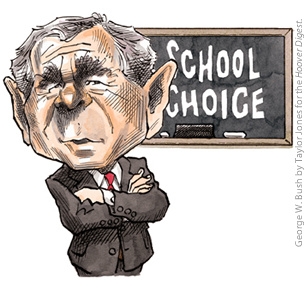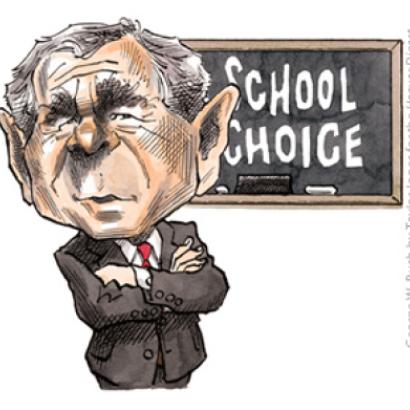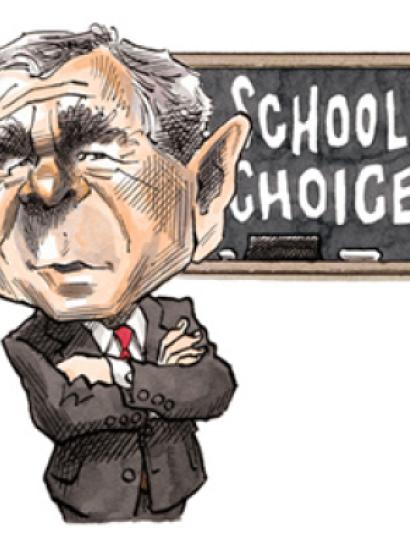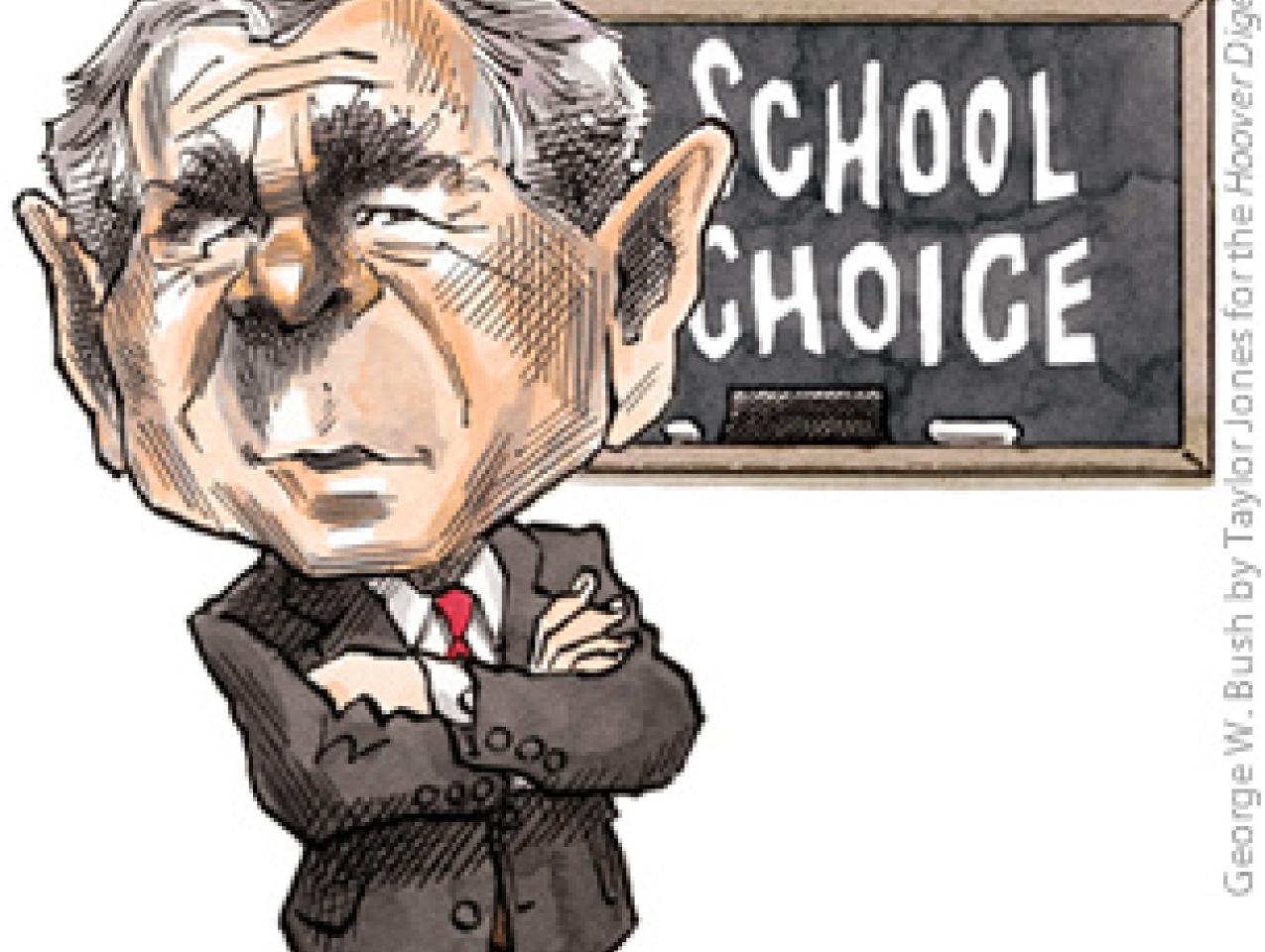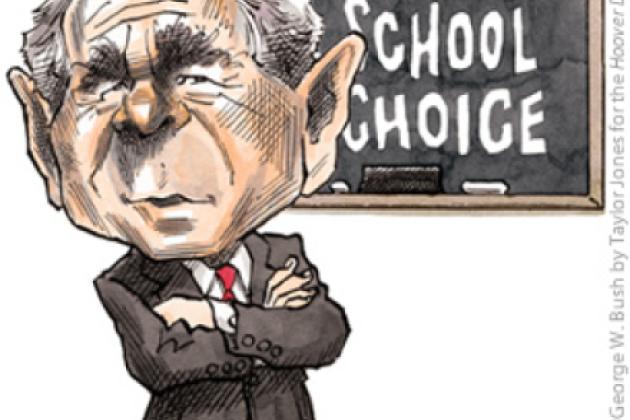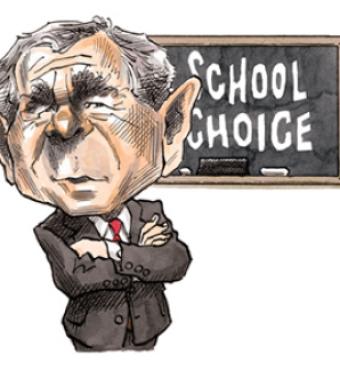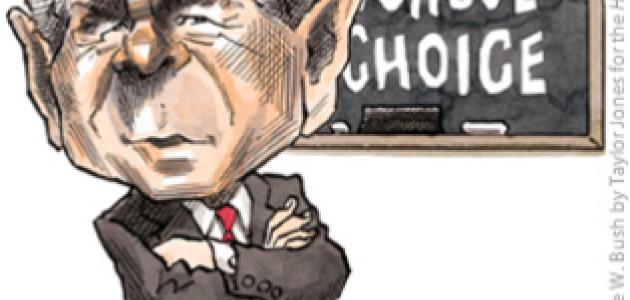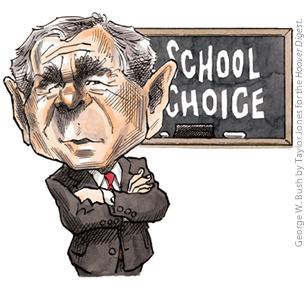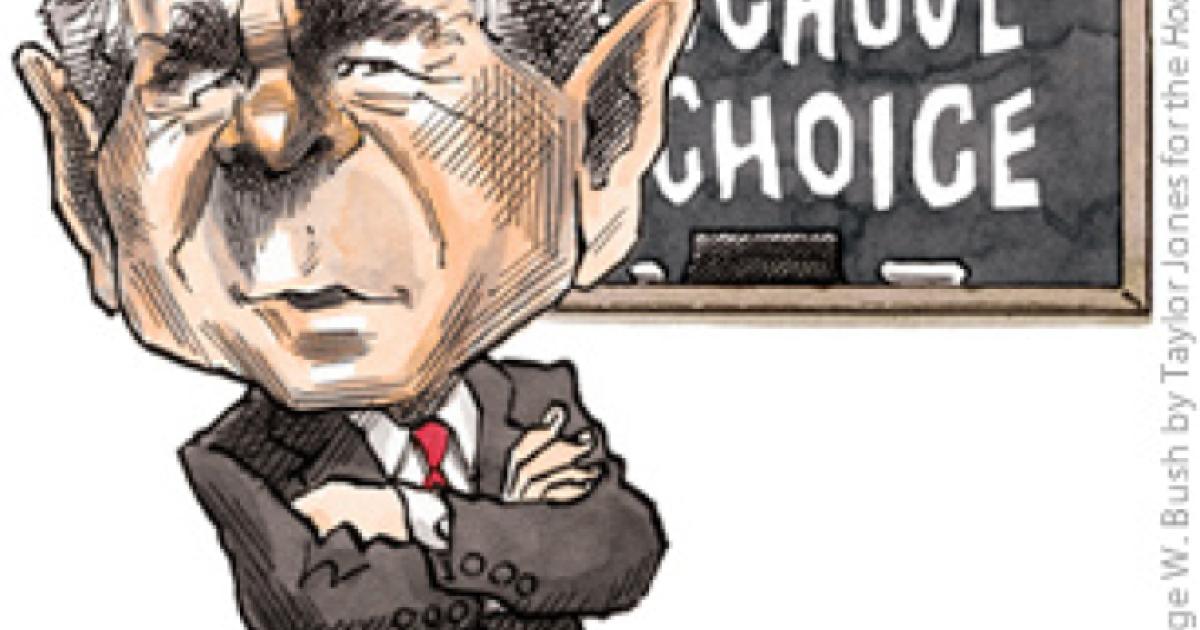- K-12
- The Presidency
- Education
- Politics, Institutions, and Public Opinion
Will President Bush and his invigorated Republican allies in Congress seize their new opportunity to reshape federal education policy for the twenty-first century?
One can hope.
Education loomed small during the campaign, save for much fruitless wrangling over the adequacy of current federal spending levels. Immediately after his victory, however, the president enumerated his high-priority agenda items for the second term and included education on that list. But how he talked about it is revealing—and worrying. His other domestic initiatives could be termed part of the “ownership society.” They would empower individuals and families to make their own decisions and direct their own resources: shaping their own social security, finding the health care that suits them, keeping more of their after-tax income, paying for the college of their choice, and so on. Only when talking about K-12 education did he speak in terms of institutions, indeed of governmental institutions: “make public schools all they can be” was the key Bush phrase. Here he spoke of providers of the delivery system rather than its clients.
There is, of course, much to be said for improving the elementary-secondary delivery system and plenty of reason to focus on high schools, which appear to be the top White House concern. The real falloff in U.S. achievement begins in the middle grades and worsens after eighth grade, and we have evidence aplenty that, even as a woefully large number of young people fail to graduate from high school, a huge fraction of those who do are unprepared for college-level academics or the modern workplace.
Yet reforming U.S. high schools, important and worthy as it is, is also what John Kerry would have done as president. It has little to do with the election results or the GOP mandate, such as it is. And it has naught to do with the moral values and faith issues that are said by most analysts to have shaped the election results—and differentiated Republicans from Democrats.
The proper GOP focus these next four years would be to bring the ownership society into primary-secondary education by accelerating America’s progress toward universal school choice. That’s the K-12 equivalent of giving people a say over their health care and their social security investments. Give them a say over where (and how and from whom) their children learn.
There are innumerable ways in which this goal could be advanced from Washington. Let me mention four:
Strengthen the landmark education law of the first term, the No Child Left Behind Act, by turning its modest choice elements into something that will serve many more children. Erase the statutory boundaries that now constrain those choices (e.g., school districts), create alternative mechanisms to operate these programs in states and districts that are hostile to them, seed thousands more charter schools, and make it harder for states and districts to obstruct the spread of charters.
Underwrite the growth of virtual schools and virtual charter schools, thus bringing the benefits of enriched curricula and high-quality instruction, as well as educational options and modern technology, to rural and small-town America and to homeschoolers.
Following the new District of Columbia model, make federally subsidized voucher programs available for low-income youngsters in communities that are ready and willing to accept such programs.
Using consumer-friendly information systems (e.g., GreatSchools.net), bring specific data about school options and school performance to parents across America so that they can make informed choices—and do their part to hold schools accountable for results.
Four worthy federal policy initiatives—and that’s just the tip of the choice iceberg. If President Bush wants a lasting education legacy from his second term, he should do for the empowerment of parents what, during his first term, he did for standards, testing, and school accountability. He might even find a measure of support among Democrats who have figured out that it’s neither sound policy nor good politics to remain joined at the hip to the public school establishment.
